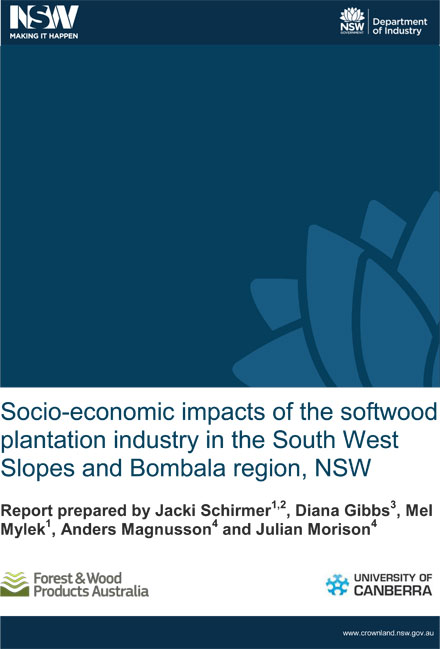
A new report has for the first time measured the socio-economic impact of the southern NSW softwood industry, which adds more than $1 billion to the region’s economy annually. Source: The Border Mail
It found ongoing plantation investment was needed to support processing and spin-off industries.
The NSW South West Slopes/Bombala region was among the best examples of integrated processing hubs close to plantations.
Key players in the industry included Carter Holt Harvey, Hyne Timber, Visy (at Tumbaruma and Tumut) Albury’s Norske Skog – as well as the soon to open XLam plant at Barnawartha which would source its timber from southern NSW as well as the North East.
The University of Canberra-led study was funded by the NSW Department of Industry, Economic, Skills and Regional Development and Forest and Wood Products Australia.
The report does not include timber operations in North East Victoria, which has major operations at Myrtleford, Benalla and Wangaratta.
About 2.5 million tonnes of timber was harvested from the region annually, with South West Slopes softwood plantations covering 165,161 hectares.
With Pinus radiata needing about 32 years before felling, plantations needed long-term commitment. Trees undergo a first thinning after about 12 years, and a second 10 years later, which provides low grade wood for pulp and paper production, a key value add component while high-quality logging timber grows.
Softwoods Working Group chair Peter Crowe said the plantation size was decreasing as some land was converted back to other agriculture or grazing production after harvesting, rather than being replanted. Australia still imported $2 billion worth of softwood annually to meet demand.
“The bottom line is the more trees you plant the more jobs you get and the more investments you get,” Mr Crowe said.
Almost 2000 people were directly employed in the industry, and 88% of them in full time work, with a further 3458 flow-on jobs.
“The multiplier for every direct job in the industry is 2.8. We were amazed when we saw it,” Mr Crowe said.
“Every one job we generate is really nearly three jobs. That’s why 52% of the people on the South West Slopes, between Albury and Wagga and across the Brindabellas, depend on the forest industry.
“It’s a pretty impressive number.”
The report is available for download at
www.crownland.nsw.gov.au/__data/assets/pdf_file/0005/721724/socio-economic-impacts-of-the-softwood-plantation-industry.pdf







